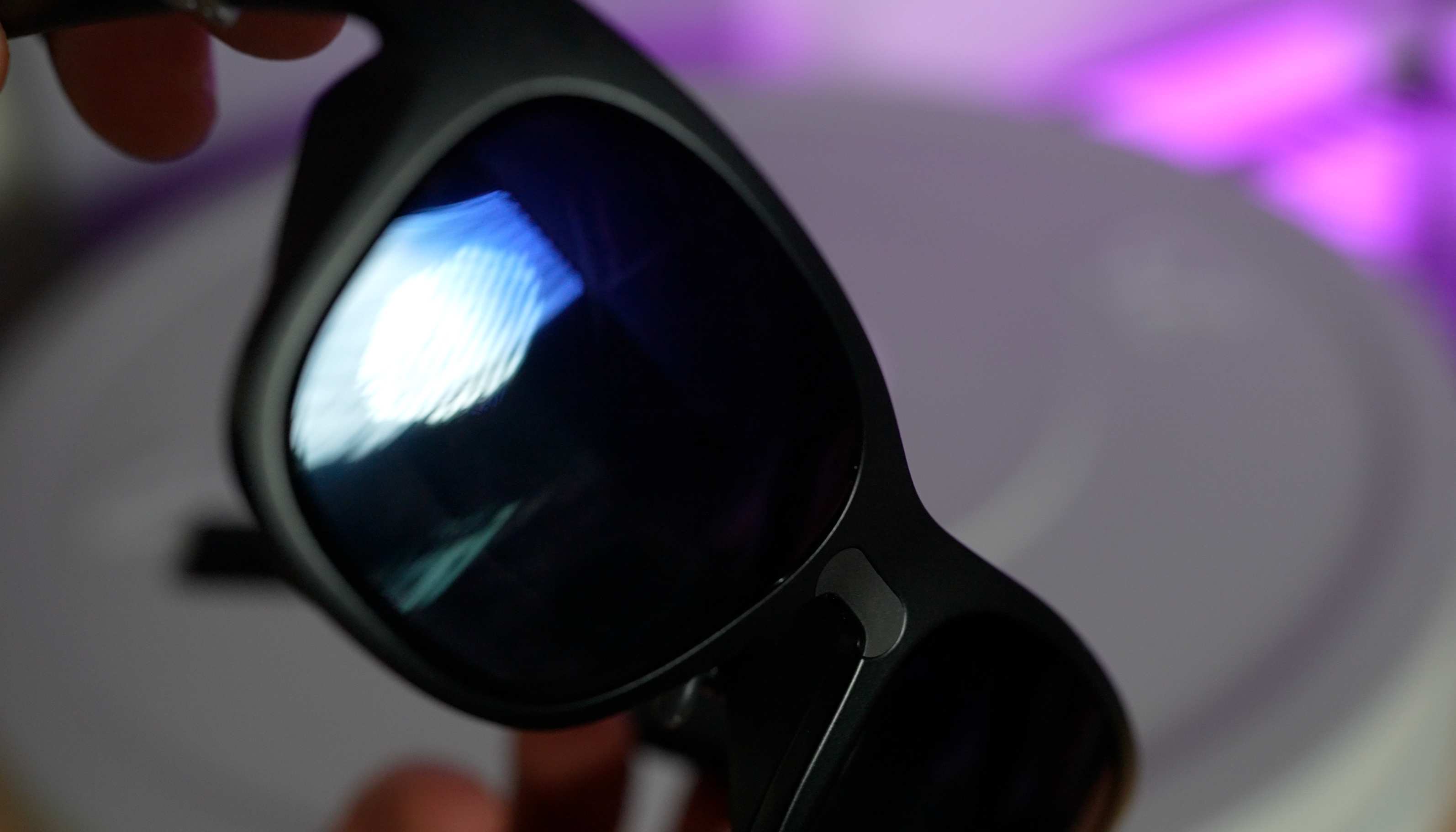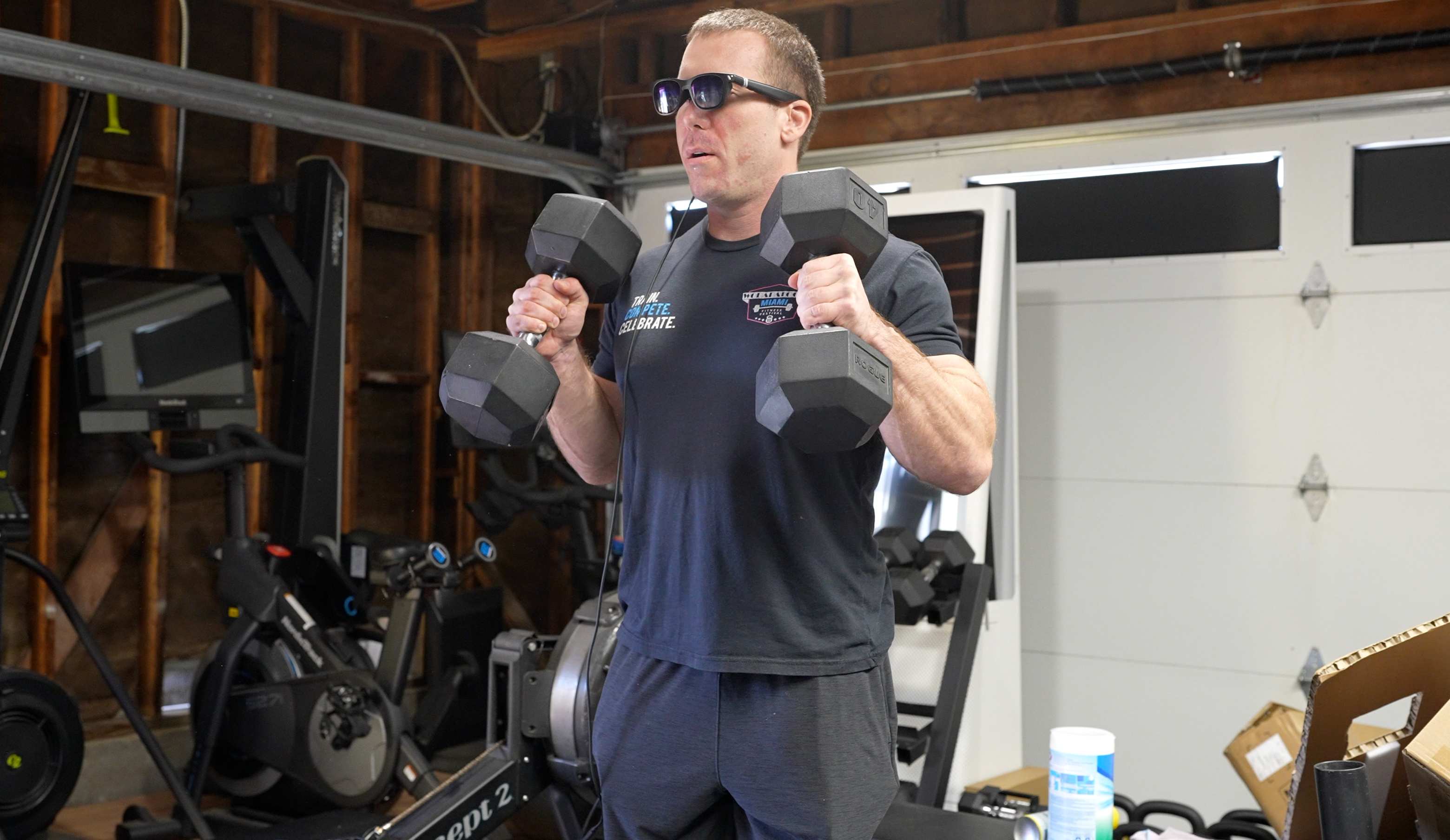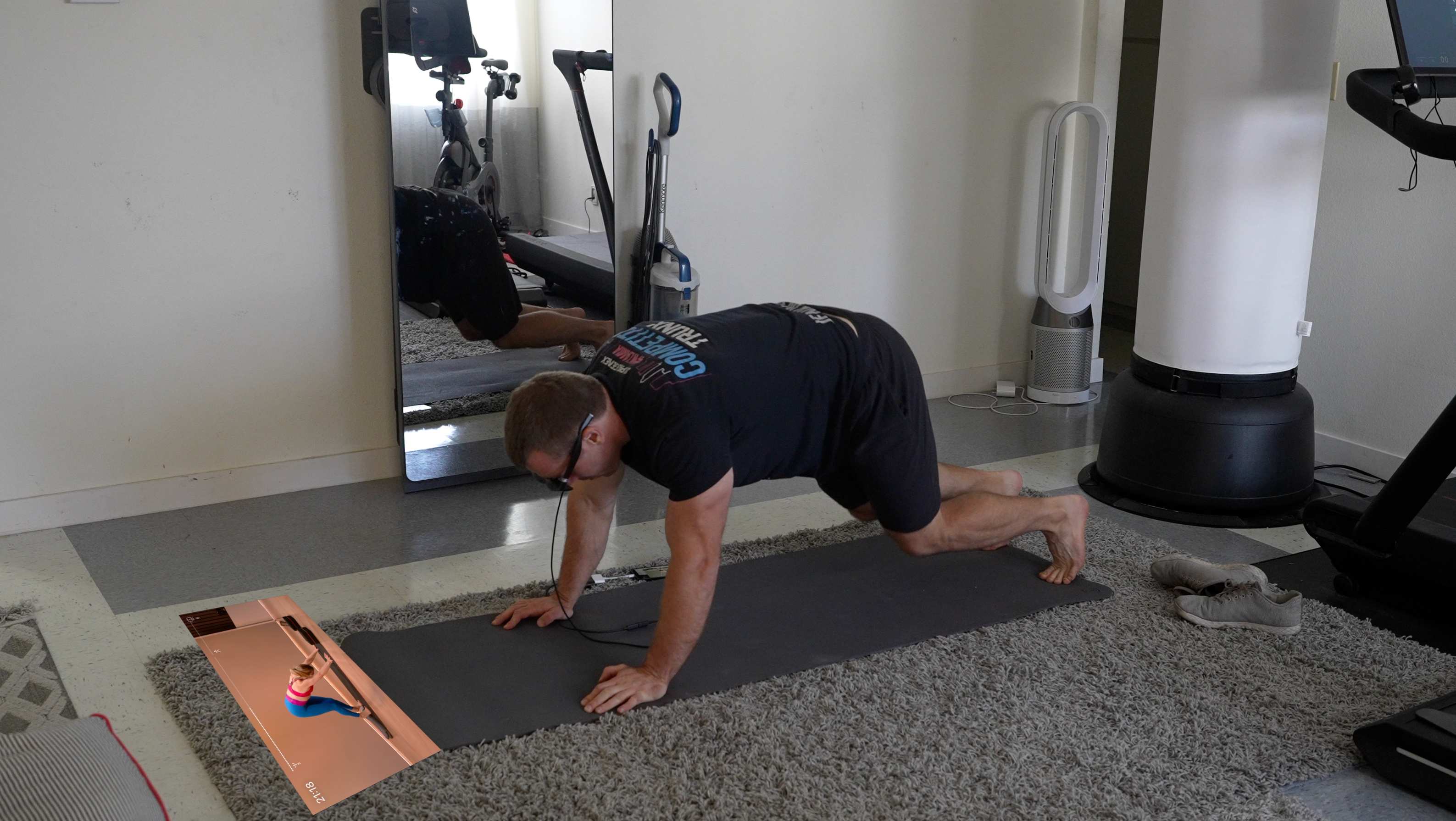
Over the past 30 days, I’ve swapped out my Peloton Bike with the VITURE One XR/AR Glasses. In fact, I’ve been using VITURE’s futuristic glasses to take connected fitness classes for biking, rowing, running, and even yoga.
Peloton vs VITURE One AR/XR Video
Subscribe to Connect The Watts for more connected fitness news, updates, tips, and guides.

Why the swap
There are two reasons why I wanted to test out VITURE’s XR/AR Glasses as a replacement for connected fitness devices like Peloton.
For one, if you take away the screen on a Peloton, the equipment underneath is arguably overpriced compared to “unconnected” versions of the same thing.
Secondly, because a lot of equipment like Peloton is tied to its connected fitness service, the attached screen loses most of its value if you ever decide to stop paying the monthly subscription. In Peloton’s case, this is $44 per month.

So a lot of people are starting to catch on that, in some cases, it is better to buy an “unconnected” device and then set up a TV or an iPad holder to take classes or watch a streaming service like Netflix.
This allows you to save money not only on the equipment but also on membership since even the app version of Peloton costs half the amount you must pay with the bike. You also can cancel your membership and still watch Netflix and YouTube or even try a different connected fitness membership altogether.

How VITURE’s glasses work
You can connect VITURE to pretty much any device you’d like (though they have different attachments depending on the device). Then, when you wear the glasses, you’ll see a huge HD display floating right in front of you.
The picture quality here is surprisingly crisp and clear. It’s not 4K, but it is as clear as any of the HD screens that come with connected fitness equipment like Peloton. There is also a wheel that you can adjust each lens to suit your own eyes to improve the clarity. Depending on your set-up, it can feel like you are watching the class on a 120″ display.
So, my idea was to cancel the expensive Peloton membership and replace it with the less-expensive app version, as well as Netflix and other streaming services.

VITURE glasses with fitness
An indoor bike is actually the best fitness use case for VITURE One glasses that I tested. Given how stationary you are when cycling, you don’t need to worry about the glasses moving around, and the screen stays locked pretty much in place in front of you. Plus, if you are using a bike that displays metrics below you, you can still read them through the bottom of the glasses.
If the wall is far in front of you, the HD display feels huge because your brain sort of imagines that the screen is also far away. The screen then feels smaller the closer the wall in front of you is. For example, when rowing, it feels like the screen gets larger as you press away from the rower and then gets smaller as you come in for the catch.
Running on a treadmill is nice in that you can always see your feet below the glasses, so there is never any worry about getting tripped up. However, as your head bobs up and down, the screen also moves up and down with you. It is not too bad (I get motion sick easily and never felt bothered by it), but it does take a little getting used to. If you use treadmills for walking or hiking, this would not be an issue at all.

The equipment I was most surprised with while using VITURE was the SkiErg. I figured with all the head movement that I would feel sick or the glasses would be moving around too much. However, there is a lot less head movement than I thought, and the screen ended up feeling pretty stable and enjoyable to view.
For strength, I did not find VITURE to be a good choice. When lifting weights, you want to be able to focus on something not moving to help create stability. With a screen floating in front of you, it becomes more of a hindrance, and I certainly wouldn’t feel safe using them while lifting heavier loads.

On the other hand, Yoga with VITURE glasses ended up being a great experience. I’m very much a beginner when it comes to yoga, so it is helpful for me to see the instructor. The problem with a traditional screen is you are often in positions where you can’t see the screen without messing up the position. With VITURE, I was able to see and follow along with the instructor the entire time. The glasses would slide a little in some positions, like the downward dog, but never got to the point where they were close to falling off.

VITURE One XR/AR Glasses final thoughts
Overall, I found the VITURE One XR/AR Glasses to be a surprisingly viable option as an alternative to connected fitness devices like Peloton. Though I am not sure I would go as far as suggesting getting them just for that purpose. Considering you can also use VITURE to watch movies on an airplane or on the go, create a portable screen for gaming devices like the Nintendo Switch, or just be able to relax outside while still catching up on some shows, I think when you add it all up, it ends up being a pretty cool a practical piece of tech.
FTC: We use income earning auto affiliate links. More.



